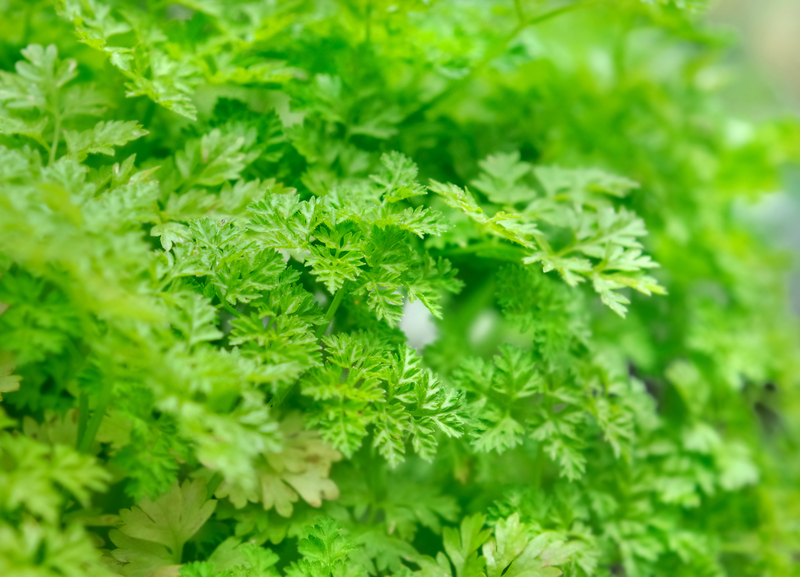Professional Tips for Tree Stump Removal Success
Are unsightly stumps dotting your landscape or yard, standing as reminders of trees you've already removed? Tree stump removal can dramatically enhance your property's appearance, prevent pest infestations, and make way for new landscaping projects. While chopping down a tree is just the beginning, removing tree stumps effectively requires careful planning, the right tools, and expert know-how. In this comprehensive guide, we'll share professional tips for tree stump removal success. Discover actionable strategies, expert insights, and important safety considerations to help you confidently tackle stubborn stumps and restore your green space.

Why Is Tree Stump Removal Important?
Some homeowners let tree stumps linger for months or even years. However, leaving stumps unattended can cause several issues:
- Pest Risk: Stumps attract insects like termites, beetles, and ants, which can eventually invade your home.
- Disease Spread: Decaying wood harbors fungi and pathogens that may spread to healthy trees and plants.
- Safety Hazards: Stumps create tripping hazards, especially for children and seniors.
- Obstructed Landscaping: Stumps get in the way of mowing, gardening, or new construction.
- Regrowth: Some stumps sprout new shoots, turning one problem into many.
Pro tip: Removing stumps not only improves aesthetics but also boosts your yard's overall health and safety.
Understanding the Main Tree Stump Removal Methods
Before diving in, decide which method best fits your needs. Here are the most common ways professionals approach tree stump extraction:
1. Stump Grinding
A stump grinder chews away at the wood using a powerful spinning disc, reducing the stump to wood chips. Stump grinding is fast, effective, and minimizes disturbance to the surrounding soil.
- Best for: Medium to large stumps, situations where you want to avoid digging up roots.
- Pros: Quick, less labor-intensive, doesn't leave a large hole.
- Cons: May leave behind some roots, requires equipment rental or professional help.
2. Manual Digging & Removal
This traditional method uses hand tools like shovels, mattocks, saws, and axes to dig out the stump along with its roots.
- Best for: Small-to-medium stumps, homeowners with basic tools and strong backs.
- Pros: No equipment rental needed, full removal of stump and roots possible.
- Cons: Labor-intensive and time-consuming, may disturb surrounding landscaping.
3. Chemical Stump Removal
This approach involves drilling holes in the stump and applying a stump removal chemical that accelerates natural decay, making the stump soft and easier to break apart after several weeks or months.
- Best for: Patience-required projects or older, smaller stumps.
- Pros: Low physical effort, inexpensive.
- Cons: Takes months, chemicals may be hazardous or restricted in some areas.
4. Burning
Some opt for burning the stump after making strategic cuts and applying accelerants. This method is less common due to safety and legal concerns.
- Best for: Rural properties, areas where outdoor burning is lawful.
- Pros: Requires minimal tools.
- Cons: Fire risk, air pollutants, takes time, may not fully remove underground roots.
Step-by-Step Guide to Successful Tree Stump Removal
Ready to tackle your tree stump removal project? Follow these expert steps for optimal results, from preparation through cleaning up.
Step 1: Assess the Stump
- Estimate the stump's size, wood type, and root system spread.
- Look for obstructions like cables, pipes, or irrigation lines nearby.
- Consider hire a tree removal company for large or stubborn stumps near utilities.
Step 2: Gather the Right Tools and Safety Equipment
Basic manual tools:
- Shovel
- Mattock or pickaxe
- Hand saw or axe
- Loppers (for small roots)
- Chainsaw (for large stumps, use caution)
Safety gear:
- Sturdy gloves
- Protective eyewear
- Steel-toed boots
- Long sleeves and pants
- Ear protection (for power tools or grinders)
Optional: Stump grinder rental, chemical remover, fire permit (if burning is allowed)
Step 3: Prepare the Area
- Clear debris, rocks, or mulch away from the stump base.
- Mark any underground utilities before digging (call 811 in the U.S. for locates.)
- Create a safe work zone, keeping kids and pets away.
Step 4: Remove the Stump
- Manual method: Dig around the stump to expose roots, cut through them, and leverage the stump free. Remove all major roots for best results.
- Grinding: Start the grinder per manufacturer's instructions. Move the spinning wheel back and forth across the stump until it's 4-6 inches below the ground. Collect or spread wood chips.
- Chemical method: Drill deep holes in the stump and fill them with remover. Wait several weeks, then break apart the softened stump with an axe or shovel.
- Burning: Check local ordinances, drill holes, add kerosene (not gasoline), and burn under supervision. Ensure the fire is completely out before leaving.
Step 5: Clean Up and Restore the Area
- Backfill any hole left behind with soil.
- Seed or sod the area to blend into your yard.
- Dispose of or compost wood chips and debris.
Note: Some stumps form "suckers" (new shoots) after removal. Dig out remaining roots, or spot treat with herbicide if persistent.
Expert Advice for Challenging Stump Removal
Hiring a Professional vs. DIY Stump Removal
While many stumps can be removed by determined homeowners, complex jobs may call for experts. When should you consider professionals?
- Large, old, or hardwood stumps with extensive root systems.
- Stumps located near buildings, fences, or underground utilities.
- Lack of access to proper tools or heavy equipment.
- Limited time or physical limitations.
Pro tip: Tree care professionals use specialized grinders and can finish the job quickly, safely, and with minimal landscaping damage.
Preventing Future Stump Problems
- Remove the stump as soon as the tree is cut down to prevent regrowth and rot.
- Maintain healthy trees on your property to avoid unnecessary removals.
- Inspect periodically for sucker growth or root problems in old removal sites.
Chemical Removal Safety and Environmental Tips
- Read all product labels and follow manufacturer guidelines strictly.
- Use only chemicals approved for residential use in your area.
- Wear gloves and protective clothing to avoid skin contact.
- Store chemicals safely, away from water sources, pets, and children.
- Dispose of leftover chemicals and empty containers at a designated waste facility.
Consider eco-friendly alternatives like Epsom salts or natural decay accelerators if concerned about chemicals.
Common Mistakes to Avoid in Tree Stump Removal
To ensure stump removal success, beware of these frequent pitfalls:
- Ignoring safety precautions - Always wear protection and keep work areas clear.
- Rushing the process - Patience ensures thorough removal and better results.
- Improper use of equipment - Read equipment manuals fully, or hire help if unsure.
- Skipping root removal - Leaving roots behind can cause regrowth and instability in your soil.
- Burying debris - Decaying wood underground attracts insects and fungus.
Preparation and attention to detail are vital for a smooth, stress-free project!

Frequently Asked Questions About Tree Stump Removal
How much does professional stump removal cost?
The average cost for professional tree stump removal ranges from $75 to $400 per stump, depending on size, accessibility, and method. Discounts may apply for multiple stumps. DIY stump removal is cheaper but more labor-intensive.
How long does stump removal take?
Manual removal may take several hours for small stumps or multiple days for larger ones. Grinding is usually finished within an hour. Chemical removal requires weeks to months due to the breakdown process.
Will the stump regrow after removal?
If significant roots are left behind, sprouting and regrowth can occur, especially in species like poplar, willow, or aspen. Thoroughly remove or treat roots to prevent future growth.
What should I do with the leftover wood chips?
Compost or spread them as mulch in flowerbeds and paths. Avoid using chips from diseased trees in gardens, as pathogens may spread.
Conclusion: Achieve Tree Stump Removal Success
Getting rid of an unwanted stump isn't just about making your yard prettier--it's about protecting your property, enhancing safety, and providing a healthy, usable landscape. Whether you choose to grind, dig, burn, or chemically dissolve, using professional stump removal techniques ensures lasting results with minimal hassle.
- Choose the removal method best suited to your situation.
- Prioritize safety and prepare thoroughly.
- Don't cut corners--remove roots fully to prevent regrowth.
- Seek expert help for large or risky jobs.
Ready to reclaim your ground and future-proof your property? With these proven tree stump removal tips, your landscape will be smooth, safe, and ready for whatever you plant next.
For ongoing landscape success, bookmark this guide and share with friends who need reliable, expert-approved advice on tree stump removal strategies!